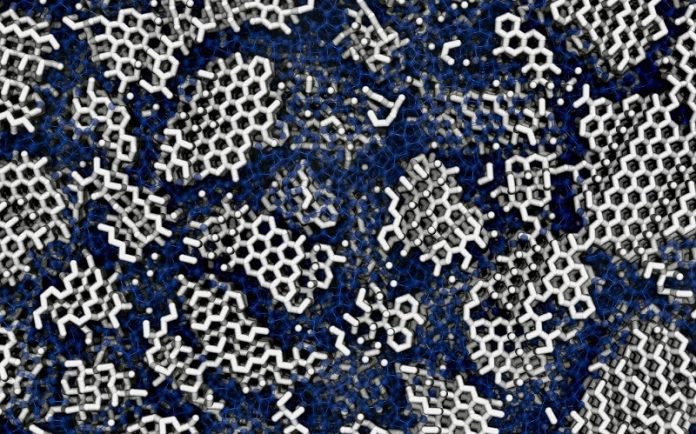
Ice in space, long believed to be completely disordered like frozen water without structure, is turning out to be more complex.
New research from University College London (UCL) and the University of Cambridge has shown that so-called “space ice” actually contains tiny crystals—even in its most common form.
Scientists have known for decades that ice in the cold regions of space is different from the solid, structured ice we find on Earth.
This space ice, called low-density amorphous ice, is found on comets, icy moons, and in dust clouds where stars and planets form.
It was widely assumed to be entirely amorphous, meaning it had no internal order or structure, because it freezes at temperatures too low to form crystals.
But in a new study published in Physical Review B, scientists used computer models and lab experiments to take a closer look.
Their simulations showed that space ice actually matches real-life measurements better when it includes tiny crystals—about three nanometers wide, just a bit wider than a strand of DNA—embedded in its otherwise disordered structure.
To test this further, researchers created real samples of space-like ice in the lab, using techniques that mimic how ice forms in space. They then gently warmed the samples to let the ice begin crystallizing.
The way the crystals formed depended on how the ice had originally been created. This suggests the ice was never completely disordered to begin with. If it had been, it wouldn’t “remember” its original structure as it warmed.
Lead author Dr. Michael B. Davies explained why this matters: space ice plays a role in many major cosmic processes—from how planets form to how galaxies evolve.
Some scientists even believe it helped bring the ingredients for life to Earth, carried on icy comets. But this new finding suggests the partially crystalline structure of space ice might make it less suitable for storing organic molecules than previously thought. Still, some regions remain disordered enough to potentially hold those ingredients.
The discovery also has practical implications. Co-author Professor Christoph Salzmann noted that if other “amorphous” materials—like the glass used in fiber optics—also contain tiny crystals, we might be able to improve their performance by removing them.
The team had already discovered a new form of ice in 2023, called medium-density amorphous ice, with the same density as liquid water. With each new finding, scientists are realizing that ice—especially in space—is far more fascinating and mysterious than it seems. As Dr. Davies put it, understanding ice’s structure could help us design better materials for space travel and deepen our knowledge of the universe.



